ISSN ONLINE(2319-8753)PRINT(2347-6710)
ISSN ONLINE(2319-8753)PRINT(2347-6710)
| Vidhyalakshmi.S1, Lakshmi.K2, Gopalan.M.A3 Professor, Department of Mathematics, SIGC ,Trichy,Tamil nadu, India1 Lecturer, Department of Mathematics,SIGC ,Trichy, Tamil nadu, India2 Professor, Department of Mathematics,SIGC ,Trichy, Tamil nadu, India3 |
| Corresponding Author: SHARMA VIVEK, E-mail: vivek03sharma@rediffmail.com |
| Related article at Pubmed, Scholar Google |
Visit for more related articles at International Journal of Innovative Research in Science, Engineering and Technology
We obtain infinitely many non-zero integer quintiples (x, y, z,w, p) satisfying the nonhomogeneous equation of degree eight with five unknowns given by 4 4 2 2 2 2 6 x ï y ï½ (k ï« s )(z ïw )p .Various interesting relations between the solutions and special numbers, namely, polygonal numbers, Pyramidal numbers, Star numbers, Stella Octangular numbers, Octahedral numbers, Four Dimensional Figurative numbers, Five Dimensional Figurative numbers and six Dimensional Figurative numbers are exhibited.
Keywords |
| Non-homogeneous equation, integral solutions, 2-dimentional, 3-dimentional, 4- dimensional and 5- dimensional and 6- dimensional figurative numbers. |
| MSC 2000 Mathematics subject classification: 11D41. |
NOTATIONS |
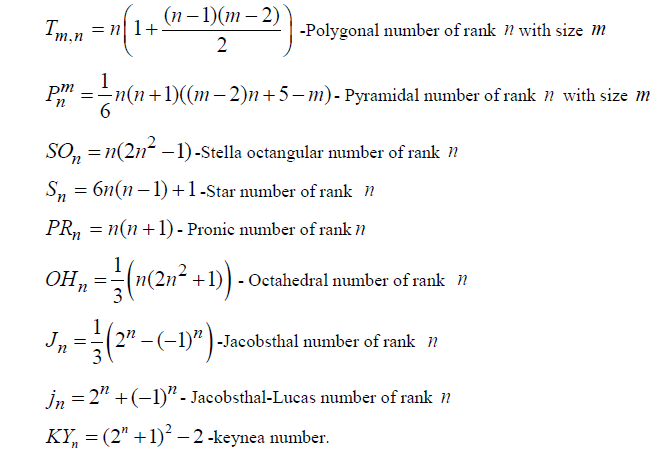 |
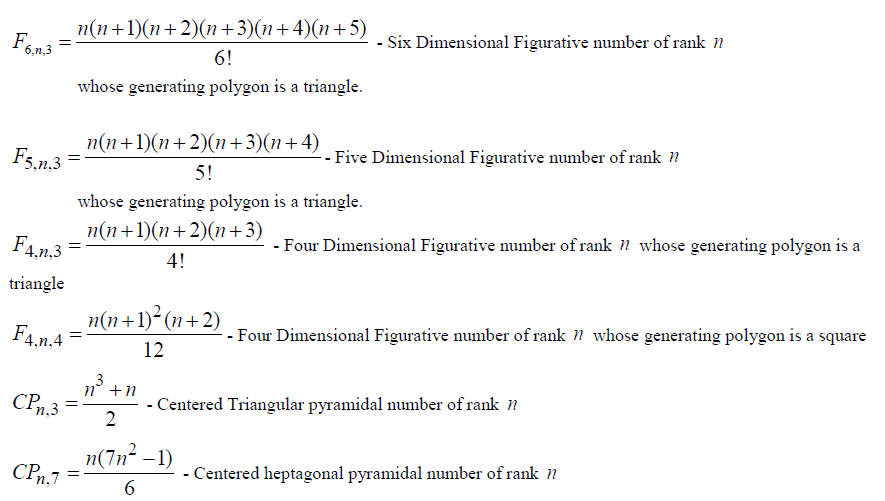 |
INTRODUCTION |
The theory of diophantine equations offers a rich variety of fascinating problems. In particular, homogeneous and non-homogeneous equations of higher degree have aroused the interest of numerous mathematicians since antiquity[1- 3]. Particularly in [4, 5] special equations of sixth degree with four and five unknowns are studied. In [6-8] heptic equations with three and five unknowns are analysed. This paper concerns with the problem of determining non-trivial integral solution of the non- homogeneous equation of eighth degree with five unknowns given  . A few relations between the solutions and the special numbers are presented. . A few relations between the solutions and the special numbers are presented. |
II.METHOD OF ANALYSIS |
| The Diophantine equation representing the non- homogeneous equation of degree eight under consideration is given by |
 |
| Introduction of the transformations |
 |
| in (1) leads to |
| The above equation (3) is solved through different approaches and thus, one obtains different sets of solutions to (1) |
| A. Case1: |
| 1)Approach1: Let p=a2+b2 (4) |
| Substituting (4) in (3) and using the method of factorisation, define |
| Equating real and imaginary parts in (5) we get |
 |
| where |
 |
| In view of (2), (4), (6) and (7), the corresponding values of x, y, z,w and p are represented by |
 |
| The above values of x, y, z,w and p satisfy the following properties: |
 |
| 2. The following are nasty numbers |
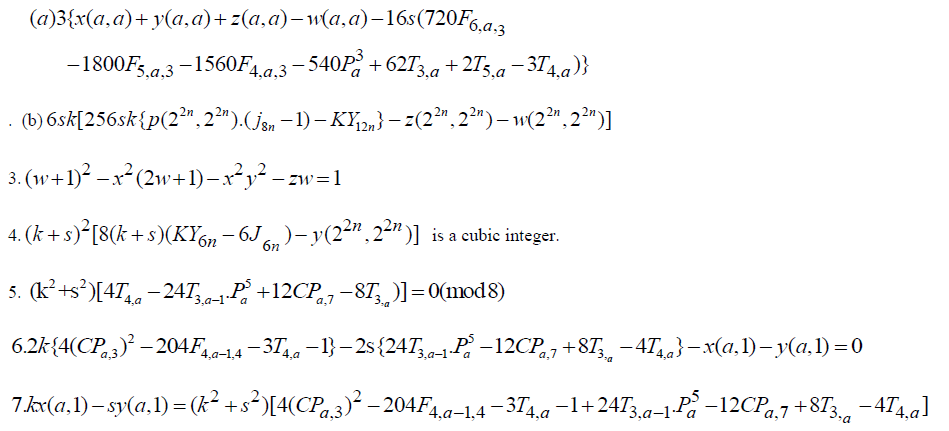 |
| 2) Remark1: Instead of (2), taking the substitution in (1) as |
| We get the solution of (1) as |
 |
| Also 1 can be written as 1=(-i)(i) (11) |
| Substituting (4) and (11) in (10) and using the method of factorisation, define, |
| Following the same procedure as in approach1 we get the integral solution of (1) as |
 |
| 4)Approach3:1 can also be written as |
 |
| Substituting (4) and (14) in (10) and using the method of factorisation, define |
 |
| Equating real and imaginary parts in (5) we get |
 |
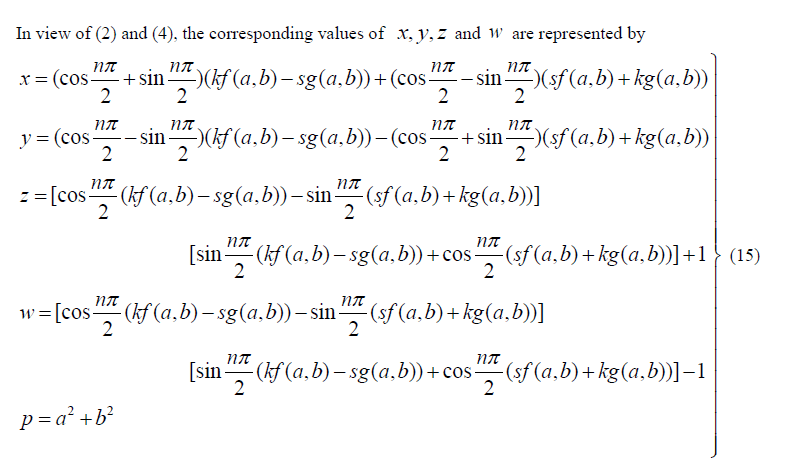 |
| 5) Approach4: 1 can also be written as |
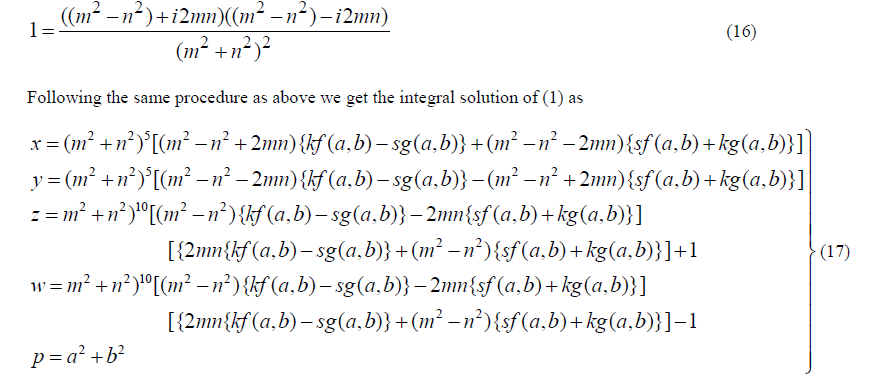 |
| 6)Approach5: Writing 1 as |
 |
| Following the same procedure as above we get the integral solution of (1) as |
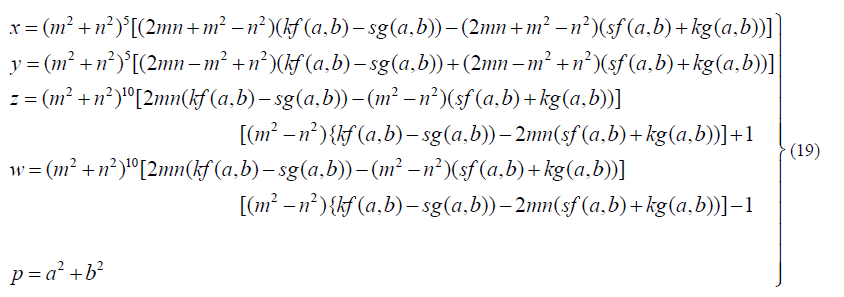 |
| 7)Approach6:Rewriting (3) as |
| Let p =α . Using the method of factorisation, writing (20) as a system of double equations, |
| solving it and using (2), we get the solution of (1) as |
 |
| B. Case2: k2+s2 is a perfect square |
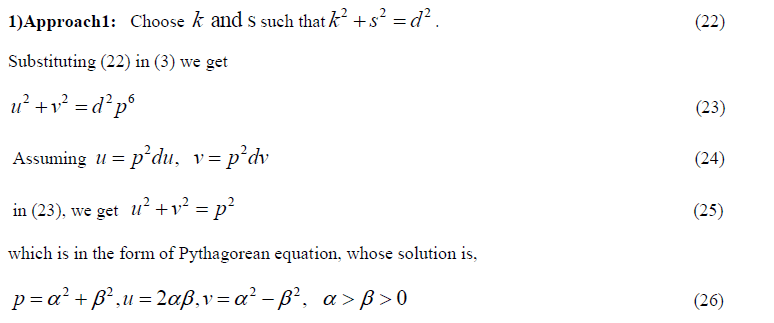 |
| Using (24), (26) and (2), we get the integral solution of (1) as |
 |
| It is to be noted that, the solutions of (25) may also be written as |
 |
| Hence we get a different solution of (1) as |
 |
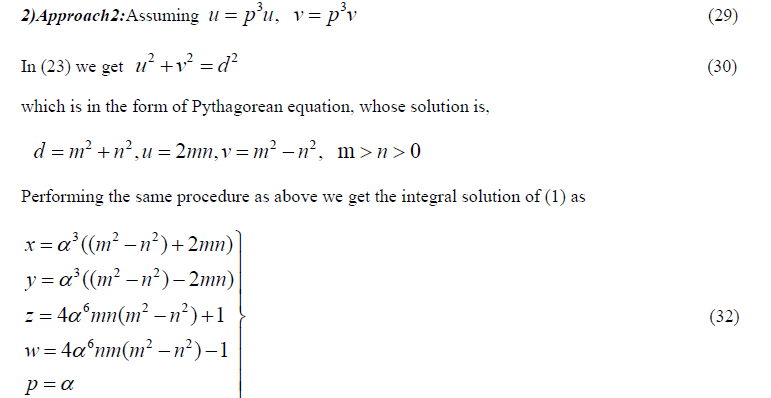 |
| It is to be noted that, the solutions of (30) may also be written as |
| Then we get a different solution to (1) |
 |
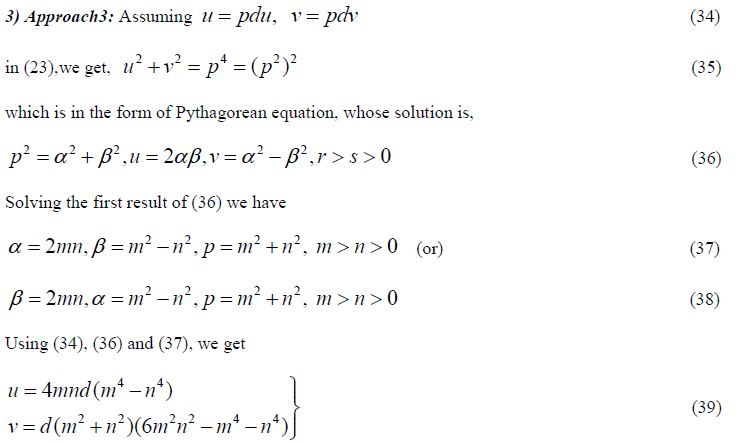 |
 |
| Similarly using (34), (36), (38) and (2) we get a distinct solution to (1) |
| It is to be noted that, the solutions of (35) may also be written as |
 |
| Again performing the same procedure as above, we will get two more different integral solutions to (1) |
| 4) Approach4: Also, taking p=m2+n2 (41) |
| in (35) and applying the method of factorisation define, |
| Equating real and imaginary parts in (42) we get |
 |
| Using (34), (41), (43) and (2), we get the integral solution of (1) as |
 |
| By using the same procedure as in approaches 2-5 we get 4 more patterns of solutions to (1) |
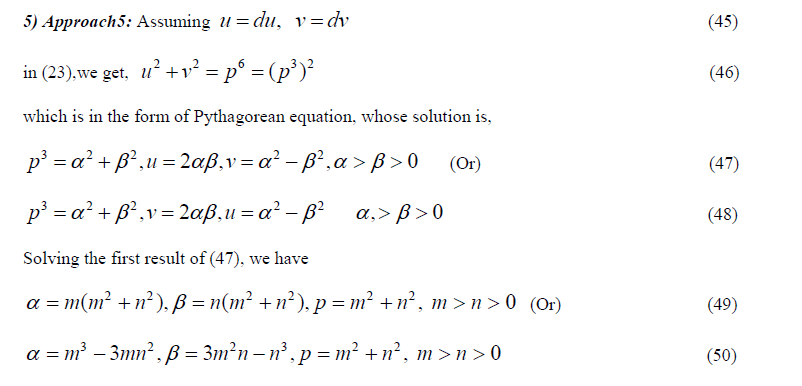 |
| In view of (49), (47), (45) and (2), we get the integral solution of (1) as |
 |
| In view of (50), (47), (45) and (2), we get a different integral solution of (1) as |
 |
| 6)Remark2: Similarly taking (48) and performing the same procedure we will get two more patterns. |
III.CONCLUSION |
| In conclusion, one may search for different patterns of solutions to (1) and their corresponding properties |
References |
|